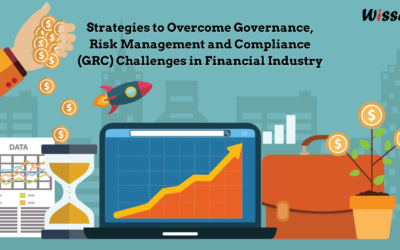Regulatory compliance has become a critical aspect of operations across industries in today’s rapidly evolving business landscape. From finance to healthcare, and from data privacy to environmental protection, compliance with regulatory standards is no longer an option but a necessity. This blog delves into the core aspects of regulatory compliance, highlighting essential requirements and best practices that organizations must adopt to thrive in a complex regulatory environment.
Understanding Regulatory Compliance
Regulatory compliance refers to the process of adhering to laws, regulations, and industry standards relevant to an organization’s operations. These regulations are established by government bodies or industry authorities to ensure fairness, transparency, safety, and ethical practices within the market. Non-compliance can lead to severe consequences, including fines, legal actions, reputational damage, and loss of customer trust.
Identify Applicable Regulations : The first step in achieving regulatory compliance is to identify the relevant regulations that impact your industry and business. This could include local, national, or international laws. Collaborate with legal experts or regulatory consultants to create a comprehensive list of regulations that your organization needs to comply with.
Establish a Compliance Framework : Developing a robust compliance framework is crucial to streamline your compliance efforts. This framework should outline the organizational structure responsible for compliance, define roles and responsibilities, and establish processes for monitoring, reporting, and addressing non-compliance issues.
Stay Updated on Changes : Regulations are not static; they evolve over time in response to changing market dynamics and emerging risks. Regularly monitor regulatory updates and changes to ensure your organization stays ahead of compliance requirements. Join industry forums, subscribe to regulatory newsletters, and engage with legal experts to gain insights into upcoming changes.
Best Practices for Regulatory Compliance
Cultivate a Compliance Culture : Compliance should be ingrained in your organization’s culture. Encourage open communication about compliance issues and empower employees to voice concerns without fear of retaliation. Training and awareness programs can educate employees about compliance requirements and the importance of ethical behavior.
Implement a Risk Management Strategy : Identify and assess compliance risks that your organization might face. Develop a comprehensive risk management strategy that prioritizes risks based on their potential impact and likelihood of occurrence. Mitigation plans should be put in place to address these risks effectively.
Document Everything : Maintain accurate and up-to-date documentation of your compliance efforts. This includes policies, procedures, risk assessments, training records, and communication with regulatory authorities. Documentation serves as evidence of your commitment to compliance and can be crucial in case of audits or legal proceedings.
Regular Audits and Reviews : Conduct regular internal audits to assess your organization’s compliance status. These audits help identify gaps or areas that need improvement. Address any issues promptly and use the findings to enhance your compliance program continually.
Leverage Technology : Technology can be a powerful ally in managing regulatory compliance. Invest in compliance management software that aids in tracking, reporting, and analyzing compliance-related data. Automation can streamline processes, reduce human errors, and provide real-time insights into your compliance performance.
Conclusion
Navigating regulatory compliance requirements is a multifaceted challenge that demands a proactive and strategic approach. Organizations that prioritize compliance not only avoid legal and financial risks but also enhance their reputation and build trust among stakeholders. By identifying relevant regulations, establishing a compliance framework, and adhering to best practices, businesses can thrive in today’s complex regulatory landscape while maintaining their commitment to ethical practices and responsible conduct. To ensure your organization thrives while staying compliant, partner with Wissda. Our expert guidance and solutions will help you manage regulatory requirements efficiently. Contact us today for tailored compliance strategies.






This is a valuable resource! The breakdown of best practices is particularly helpful – cultivating a compliance culture and leveraging technology are both key for success.
The blog post on regulatory compliance at wissda.com offers vital guidance and best practices for businesses. It emphasizes compliance importance and provides practical tips. A valuable resource for legal adherence and operational integrity.
Hi, the whole thing is going fine here and ofcourse every one is sharing data, that’s actually good, keep up writing.
Feel free to visit my blog … https://Telegra.ph/Playson-and-its-gaming-machines-12-25